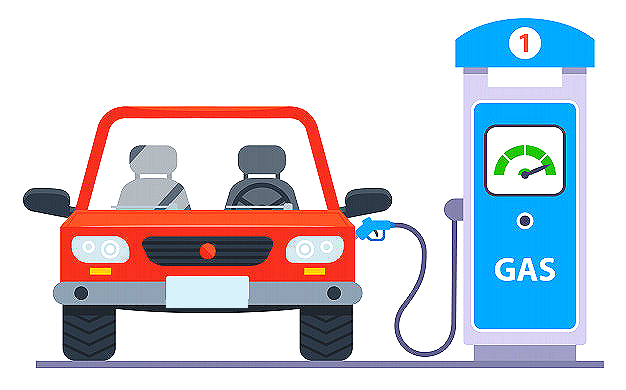



Mobile users:
For best results, view in Landscape mode.
Gasoline was around before cars, but for many years, gas was
considered a useless byproduct of the refining of crude
oil to make kerosene, a standard fuel for lamps through much
of the 1800's.
Gas stations (aka Filling stations) typically offer one of three types
of service to their customers:
Full Service:
An attendant operates the pumps, often wipes the windshield, and
sometimes checks the vehicle's oil level and tire pressure,
then collects payment and perhaps a small tip.
Self Service:
The customer performs all required service.
Signs informing the customer of filling procedures and cautions
are displayed on each pump.
Customers can still enter a store to give payment to a person.
Unmanned:
Use the pay-at-the-pump system, these are completely unstaffed.
Years ago, filling stations offered a choice between full service and
self service.
Before 1970, full service was common, and self-service was rare.
Today, few stations advertise or provide full service.
Full service stations are more common in wealthy and upscale areas.
The cost of full service is usually assessed as a fixed amount
per gallon.